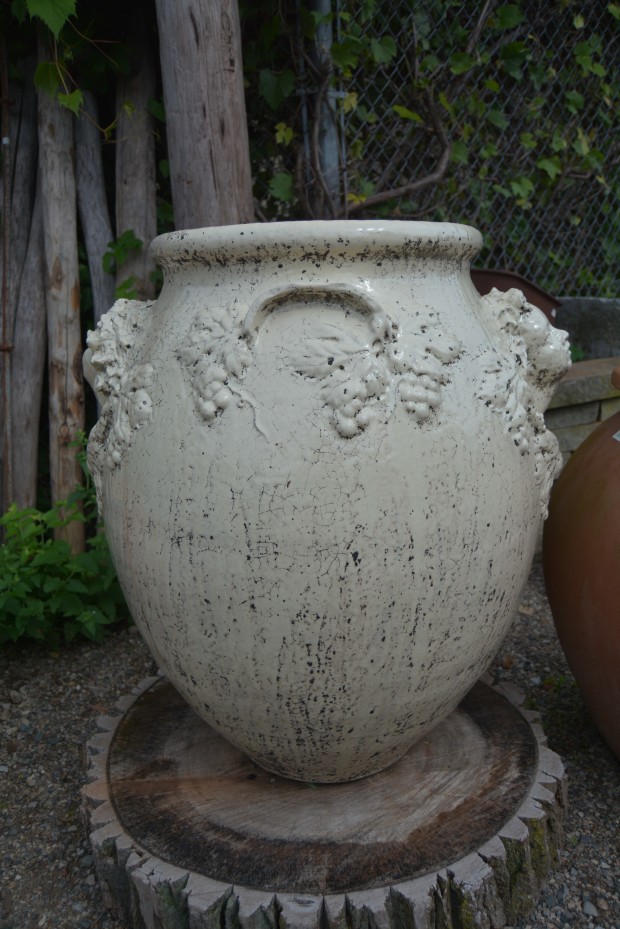 I would not begin to presume to write a scholarly essay regarding the history of the process of extracting olive oil from the fruit of olive trees. That history is long and involved. Both the fruit, and the oil, have been agricultural staples dating back 6000 years. Suffice it to say that I have read that the cultivation of olive trees is one of the earliest signs of civilization. Thousands of years ago, the precious, delicious and healthy oil was stored in jars. These jars were high shouldered, and short necked. Every country that makes pots produces its own version of the olive jar. In my own collection of hand made Italian terra cotta is an olive jar which dates back to the 17th century.
I would not begin to presume to write a scholarly essay regarding the history of the process of extracting olive oil from the fruit of olive trees. That history is long and involved. Both the fruit, and the oil, have been agricultural staples dating back 6000 years. Suffice it to say that I have read that the cultivation of olive trees is one of the earliest signs of civilization. Thousands of years ago, the precious, delicious and healthy oil was stored in jars. These jars were high shouldered, and short necked. Every country that makes pots produces its own version of the olive jar. In my own collection of hand made Italian terra cotta is an olive jar which dates back to the 17th century.
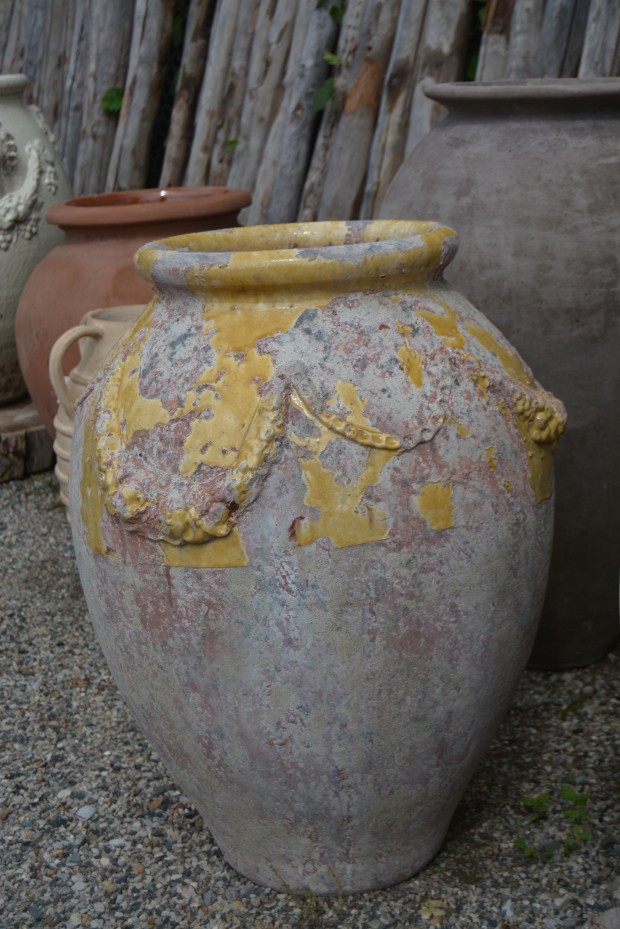 There was that long length of time when olive oil was not processed for export, bottled, and shipped. It was stored in jars, the design of which helped to keep the oil fresh. Countless varieties of olive trees means that many people all over the globe enjoy olive oil of different flavors. Today, 99% of all of the olive oil produced comes from those countries that ring the Mediterranean sea. If you have not had the pleasure of soaking a piece of handmade bread with a great olive oil, I would encourage you to do so. The oil from the olive trees, in my opinion, is a food group well worth including in any diet.
There was that long length of time when olive oil was not processed for export, bottled, and shipped. It was stored in jars, the design of which helped to keep the oil fresh. Countless varieties of olive trees means that many people all over the globe enjoy olive oil of different flavors. Today, 99% of all of the olive oil produced comes from those countries that ring the Mediterranean sea. If you have not had the pleasure of soaking a piece of handmade bread with a great olive oil, I would encourage you to do so. The oil from the olive trees, in my opinion, is a food group well worth including in any diet.
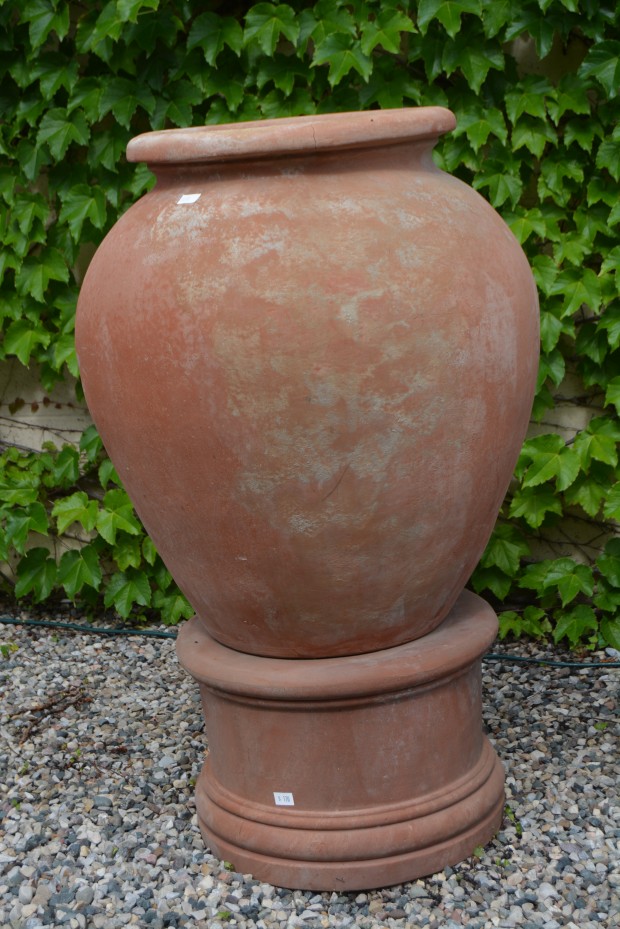 Olive oil is not stored and shipped in jars anymore. But that jar shape is a shape that persists. Jars make great garden containers. I have an abiding interest in how agriculture came to include ornamental gardening. Those moments when a landscape refers in a strong way to the history of agriculture is of great interest to me. This means I like jars.
Olive oil is not stored and shipped in jars anymore. But that jar shape is a shape that persists. Jars make great garden containers. I have an abiding interest in how agriculture came to include ornamental gardening. Those moments when a landscape refers in a strong way to the history of agriculture is of great interest to me. This means I like jars.
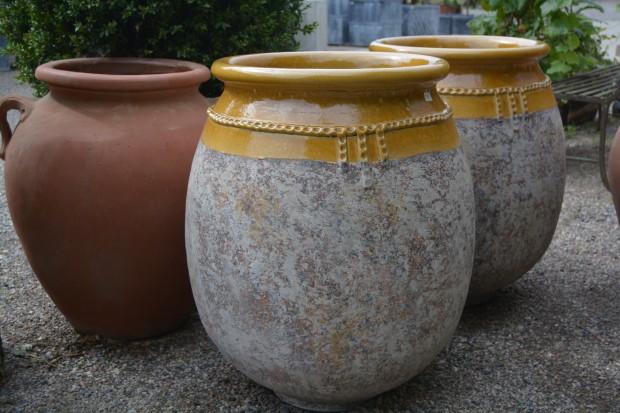 I have no olive trees. I do not grow vegetables. I do not have an orchard, or fields to plow. I am not a farmer. But I am a gardener whose roots has plenty to do with agriculture. I have an olive jar which I plant with flowers every year. A great planting that thrives is a joy. But equally important is a beautiful container whose shape dates back centuries.
I have no olive trees. I do not grow vegetables. I do not have an orchard, or fields to plow. I am not a farmer. But I am a gardener whose roots has plenty to do with agriculture. I have an olive jar which I plant with flowers every year. A great planting that thrives is a joy. But equally important is a beautiful container whose shape dates back centuries.
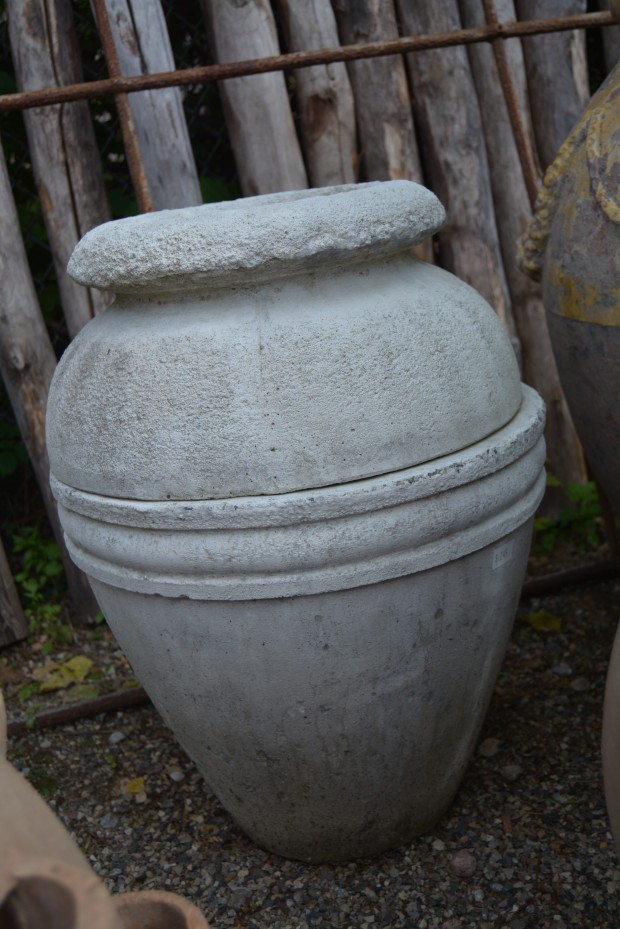 An olive jar is a shape any gardener recognizes. Every culture, every country has pots of this distinctive shape. High shoulders, and low necks. Though I may buy all of vegetables from a farmer’s market, or grocery store, that shape that I recognize as an olive jar never fails to please my eye.
An olive jar is a shape any gardener recognizes. Every culture, every country has pots of this distinctive shape. High shoulders, and low necks. Though I may buy all of vegetables from a farmer’s market, or grocery store, that shape that I recognize as an olive jar never fails to please my eye.
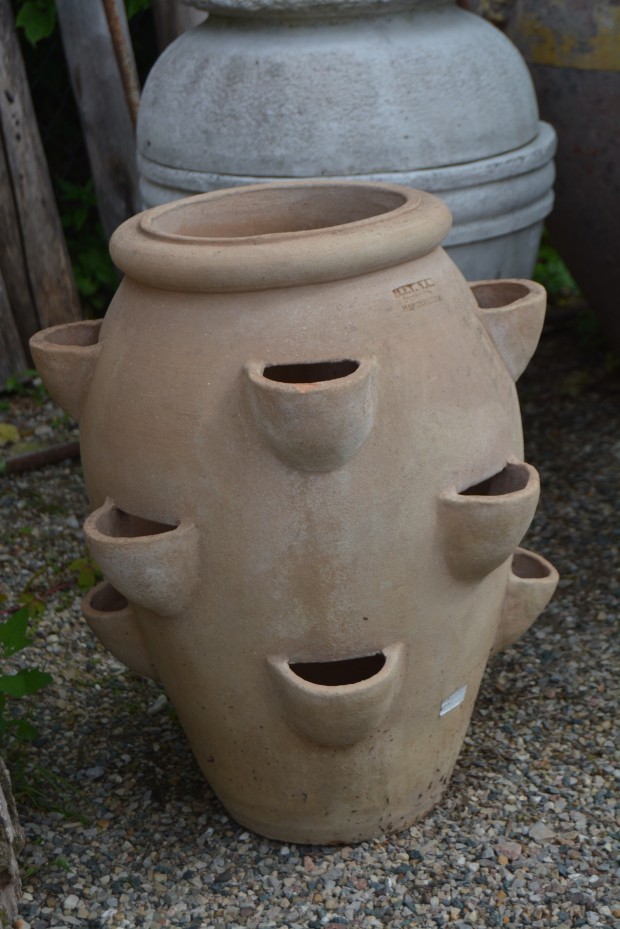 This Italian made strawberry jar from Mital, a pottery in Impruneta, Italy -this is a beautiful jar. There are many beautiful ways to plant it. I do think that the containers that are home to annual and seasonal plants are an important visual element in a garden. Olive jars make great containers for the garden. Every one of them is soaked in the broth we know as history.
This Italian made strawberry jar from Mital, a pottery in Impruneta, Italy -this is a beautiful jar. There are many beautiful ways to plant it. I do think that the containers that are home to annual and seasonal plants are an important visual element in a garden. Olive jars make great containers for the garden. Every one of them is soaked in the broth we know as history.
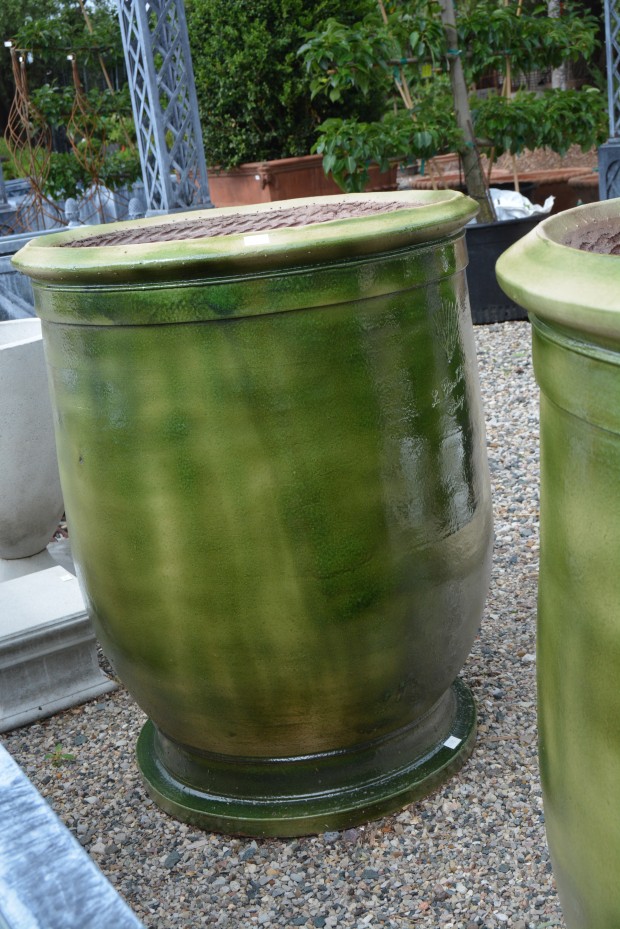
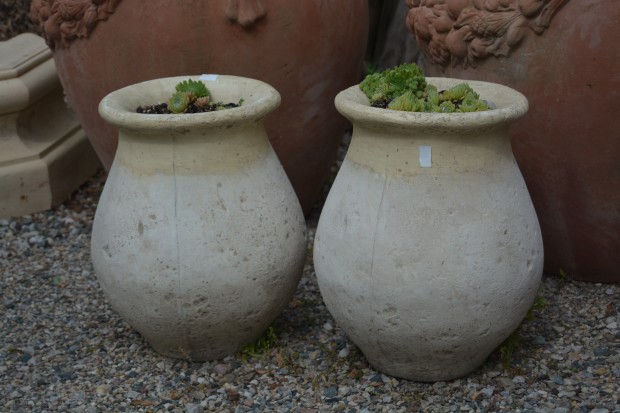
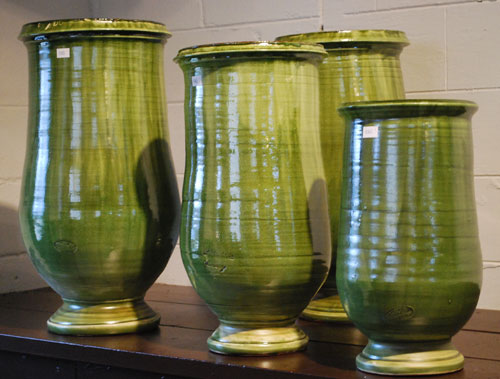
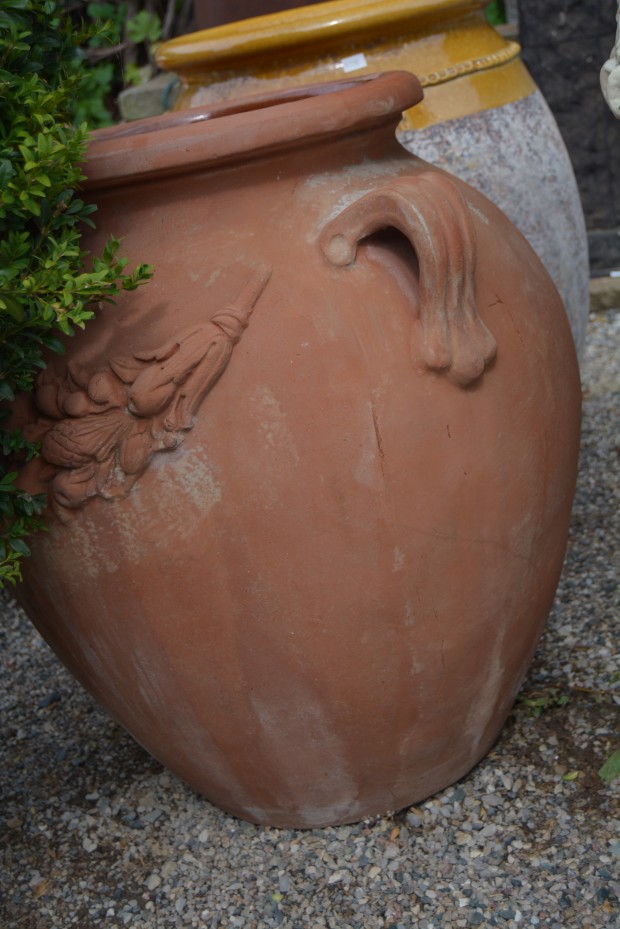
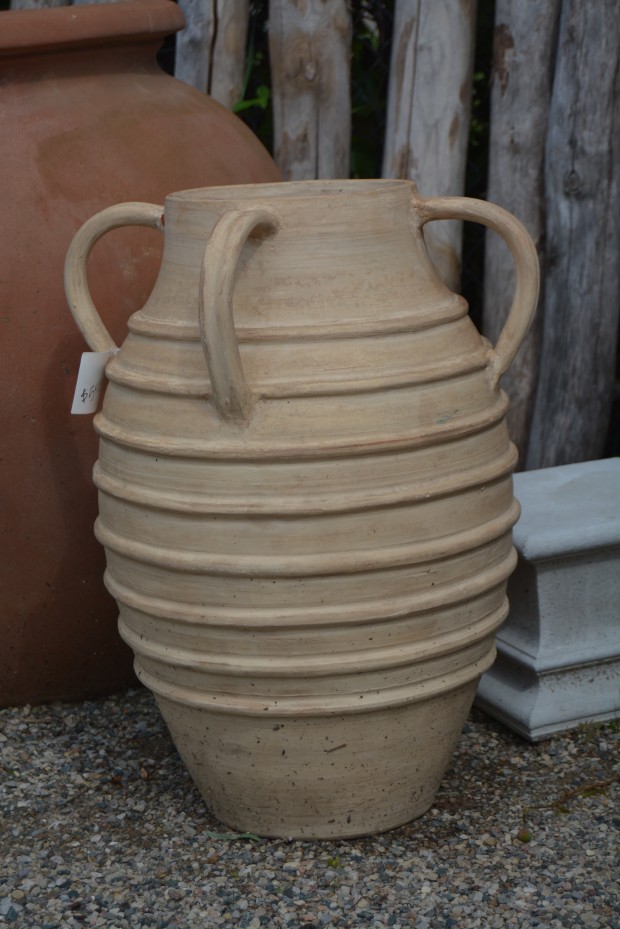
Aaaaarrrrgh !! This post is not helpful. Not helpful at all !! Just joking – it just comes at a time of great emotional turmoil regarding garden choices and I love ALL of the pots in your post.
My garden is mostly green with white flowering shrubs and small trees. I want to introduce colours by using annuals in pots. And this is where I get completely confused. On the one hand I like a natural look – unglazed terracotta, or the grey stone look. On the other hand I also like coloured glazed pots, and that lovely green olive pot is pure seduction!!
I just don’t know which way to go for a cohesive look :-/
Dear Lynne, It’s a good problem to have-editing lots of choices. My house is a 1930’s Mediterranean/arts and crafts style house. The architecture influenced my choice of pots. Most of what I have is either classic Italian terra cotta, antique terra cotta, or concrete made in the classic Italian style. But I also have some steel pots with a finish that looks like lead.There are good reasons to stick with a single look, and good reasons to mix styles of pots. I favor fewer and bigger pots-they are easier to look after. Pick the places that you want pots first. Sometimes the location suggests a material. Hope this helps! Thanks, Deborah
I am so glad I found your site. You have an incredible sense of esthetics and are truly gifted. Everything you post is just so beautifully done. I have never been to your store, but I can’t wait until I make some time to get there. I am a big fan already. Keep up the beautiful work. I always look forward to reading your next article!
Alicia, thanks so much for your letter. I think more than anything I am enthusiastic about the garden, and everything that represents. Deborah
I’ve seen SO many of these gorgeous pots in the South of France: they are all over, old and new, and everyone has them. Just so beautiful, and they fit so nicely in that climate, in any garden or on any terrace! Of course, some of them cost an arm and a leg over here… but what an addition to any garden space! Your images are perfect, and the history great! thanks….
Libby, the antique pots are very hard to find anymore, and very pricey. French gardeners love their old pots-why would they want to part with them? The new hand made pots are expensive to buy, and very expensive to ship. But they have a look like no other garden pot. Deborah
Thank you for your reply. It did clarify things a little. My garden is small, hence the permanent, background look I have gone for being mainly foliage with white flowers to create a calm and peaceful oasis. I think I will go with a natural terracotta finish but I will need to be careful with the style as I don’t want a ‘matchy-matchy’ look. I think, too, that if I keep the colour of the pots reasonably neutral I can then go a little mad each year with planting colourful annuals in them without it looking too busy.
Dear Lynne, you know what to do-I can tell from what you have written. Trust in your ideas. This will make your garden all yours. Deborah
Deborah. As always, a wonderful read – this time olive jars. I do not think I ever mentioned it, but about a year ago, my mom, now 91, and a long-retired school teacher, came to live we me and my wife. And my first introduction to the internet for her was your very blog. I knew she would admire and appreciate your work, but also recognize the depth and sincerity of your writing- your passion- your craft. She does whole-heartedly, and loved your olive jars, as Spain, for 30-odd summers was her get-away place. Thank you for all you bring to both of us. Tom in NC.
This was the original post that brought me to your site. I have always been a fan of oversized olive jars. Hopefully I will have a chance soon to use some in a client project. Thanks again for sharing great photos!
Cool stuff – I’d love to use a few of these.
Each Olive pot you have shown I wish I could call my own . . . Loved this . . .
Best regards from Bulgaria !
Oh, we’ve driven through Impruneta and saw the stacks of terra cotta pots and olive jars there – heaven for gardeners!